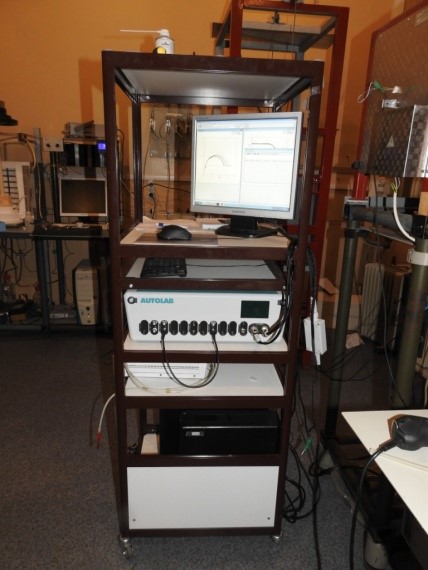
Avaliable methods of research
- Thermogravimetric and differential thermal analysis
- Electrode polarization measurements
- Testing of model SOFCs and stacks
- TOF-SIMS analysis
- Total conductivity, Seebeck coefficient and ion transference number measurements in atmospheres
- High-temperature dilatometry
- Processing of ceramic materials, electrode systems and electrochemical cells
- Synthesis of solid oxide materials for high-temperature electrochemical applications
- XPS
Electrode polarization measurements
For the model half-cells, the technique involves current (potential) scanning combined with impedance spectroscopy. The measurements are carried out in the 3-electrode cells with working (WE), counter (CE) and reference (RE) electrodes.

The solid electrolyte membrane separates two chambers where oxygen, air, nitrogen, hydrogen or their mixtures can be supplied; the oxygen partial pressure over WE is continuously controlled by an electrochemical sensor. If necessary, the gas mixtures may be dried or humidified prior to entering the chamber.
The impedance measurements enable to separate Ohmic losses associated with the resistivity of the electrochemical cell components from the polarization losses resultant from slow kinetics of the electrode processes:

The electrode overpotential under a given current can be extracted:
h = U - IROhm
where U is the potential difference between the WE and RE, I is the current flowing between WE and CE, and IROhm is the ohmic contribution to the total potential drop.



... top






